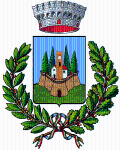Descrizione
E’ un toponimo di origine etrusca.
La prima citazione documentaria è del 1108 e riguardava una donazione a favore del Comune di Siena, un altro documento è del 1201 ed è archiviato nel Caleffo Vecchio (giuramento di fedeltà a Siena). Anche il Cartulario della Berardenga si occupa di Rosennano nel 1210, la chiesa di San Bartolomeo è richiamata già nel 1302/1303 dalle Rationes Decimarum. Nel 1320 era composto da 12 case, tutte proprietà di residenti, mentre dal 1337 è inserito come unico comunello insieme a Campi e Pancolella (Le Pancole) nel Vicariato della Berardenga. Nel 1552 gli uomini di Rosennano furono richiamati da Siena perché non avevano inviato provviste al castello di Sesta, anzi avevano sgombrato la loro roba nel fiorentino ( poco distante, essendo il confine lo stesso che oggi divide da Gaiole in Chianti).
Nell’anno 1676 il comunello di appartenenza è quello unificato con Villa a Sesta e Cetamura, i vari poderi di Rosennano erano di proprietà della famiglia Lamioni in parte, e i restanti della famiglia Valenti, Salvadore ed eredi Giovan Maria. La chiesa di San Bartolomeo è stata oggetto di vari rimontaggi nel XIX e XX secolo, la chiesa di Santa Maria delle Nevi ( oggi abitazione) posta all’inizio, lato ovest, di Rosennano fu costruita nel 1669 ( giuspatronato Valenti, ancora proprietari nel 1825) e restaurata nel XX secolo. Negli ultimi duecento anni il borgo di Rosennano è stata oggetto di irrilevanti modifiche architettoniche.
Poco distante dal borgo in un castagneto raggiungibile dall’edificato La Madonna sono stati rinvenuti i resti di una estesa costruzione a pianta rettangolare (100 x 60 mt circa) si ipotizza la presenza di un grande complesso fortificato dalla difficile datazione per l’assenza di adeguati reperti.
English version:
The place name is of Etruscan origin.
The first documentation, in 1108, regarded a donation to the Municipality of Siena; another document from 1201 is archived in the Caleffo Vecchio (a sworn statement of loyalty to Siena). The Cartulary of Berardenga also mentioned Rosennano in 1210, land the church of San Bartolomeo was mentioned in the 1302/1303 Rationes Decimarum. In 1320 Rosennano consisted of 12 houses, all owned by residents, while in 1337 it was listed as a single common along with Campi and Pancolella (Le Pancole) Vicariate of the Berardenga. In 1552 the men of Rosennano were reproached by Siena because they had not sent supplies to the castle of Sesta, and in fact had unloaded their merchandise in Florentine territory (which was not far away, as this was the same boundary that now divides it from Gaiole in Chianti).
In 1676 it belonged to a unified common along with Villa a Sesta and Cetamura; the various farms in Rosennanon were owned in part by the Lamioni family, and the rest by the Valenti family, Salvadore and Giovan Maria. The church of San Bartolomeo underwent various modifications in the 19th and 20th centuries; the church of Santa Maria delle Nevi (now a residence) at the western edge of Rosennano was built in 1669 (with the patronage of the Valenti family, which still owned it in 1825) and restored in the 20th century. Over the last two-hundred years the village of Rosennano has been subject to irrelevant architectural modifications.
Not far from the hamlet, in a chestnut wood reachable from La Madonna, the ruins of a large rectangular construction (100 x 60 meters, ca.) was found; it is hypothesized that there was a large fortified complex there, but it is difficult to date due to the lack of adequate finds.
Modalità d'accesso
Accesso libero
Indirizzo
Punti di contatto
Ultimo aggiornamento: 4 marzo 2024, 12:02

